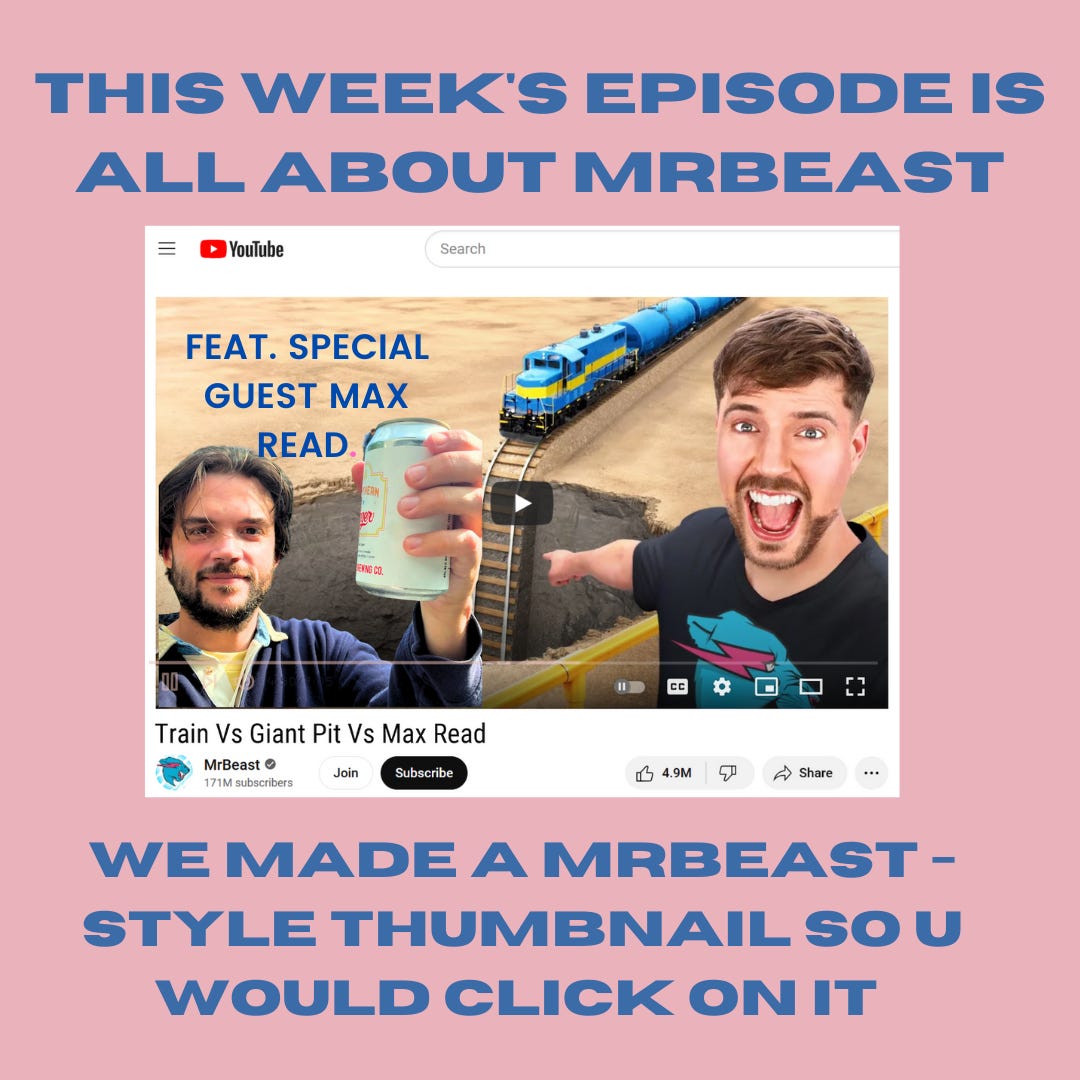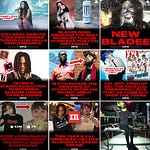Welcome to The Culture Journalist, a podcast about culture (and counterculture) in the age of platforms. If you have fun listening to this episode, please consider “joining the club” and becoming a paid subscriber. Paid subscribers get monthly bonus episodes, plus ungated access to culture recommendations, essays, and more.
For most of the so-called “content creators” we know, marketing is a necessary evil. You make the work you want to make, then wait until the last possible moment to figure out how you’re going to get people to click on it. But what would it look like if you became super obsessed with the marketing side of the equation and let it become the driving force of the entire creative process? What if you zeroed in on a single distribution platform, spent years studying how it worked, then built an entire creative practice based entirely around the tips and tricks you knew would attract a snowballing number of eyeballs to your work?
If you’re wondering what the resulting content would look like, well… it might look something like the videos of a 25-year-old YouTuber named Jimmy Donaldson, who recently surpassed the Swedish edgelord PewDiePie to become the biggest YouTuber of all time. Even if you haven’t seen his videos, or stumbled across his chocolate brand, you’ve probably heard his YouTube moniker: MrBeast. As of this writing, he has 171 million subscribers and counting.
Donaldson owns an entire neighborhood in his hometown of Greenville, North Carolina, where he has dozens of employees working around the clock to produce big-budget spectacles with names like “$456,000 Squid Game in Real Life” and “I Spent 50 Hours Buried Alive.” His videos often revolve around random acts of charity — one of his early breakouts involved him walking up to a homeless person and giving him $10,000 — and he has spoken at length about how attention-grabbing headlines and thumbnails are the engine of his success. If you know somebody who works in actual marketing, they’d probably tell you that MrBeast is the future of media.
Between the budgets, the audience numbers, and the sheer physical scale of many of these spectacles — not to mention his spin-off channels and a whole sub-economy of reaction videos and YouTube tutorials — the world of MrBeast is so big and bewildering that it takes a special kind of dedication to explain it all. Lucky for you, The New York Times Magazine recently published a delightfully brain-bending story called “How MrBeast Became the Willy Wonka of YouTube” by one of our favorite writers on technology and culture. His name is Max Read, and he’s a screenwriter and journalist who has a terrific newsletter on Substack called Read Max.
Max began work on the article after a MrBeast video called “1000 Blind People See for the First Time” went “bad viral” on Twitter, sparking questions about the “authenticity” of Donaldson’s super-sized brand of altruism (he paid for their glaucoma surgery) and differing generational attitudes towards the mercenary tactics he uses to pull these stunts off. He joins us to discuss what he calls the “unstoppable flywheel of charity, spectacle, and growth” that powered Donaldson’s rise, and the dystopian realities of the creator economy that his tactics lay bare. We also dig into what makes MrBeast’s relationship with his audience unique (hint: according an academic Max spoke to, it has something to do with a media studies concept called the “audience commodity”), and how even though a lot of millennials can’t stand him, there’s a little bit of MrBeast in all of us.
You should subscribe to Read Max. It’s great.
Read more by Max:
“How MrBeast became the Willy Wonka of YouTube”
“Why millennials hate MrBeast”
“Is AI the Greatest Technology ever for making dumb jokes?”
Dig the pod? Here are some ways you can support us:
1. Become a paid subscriber and unlock all our bonus content
2. Rate and review us on Apple podcasts to help more people find us
3. Forward this email to a friend



















MrBeast lays bare how the internet really works